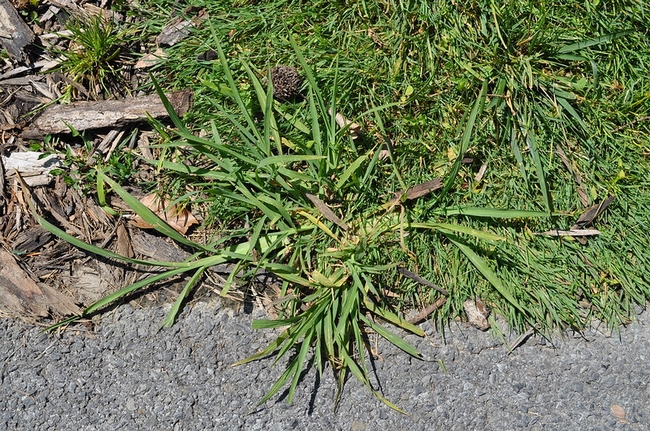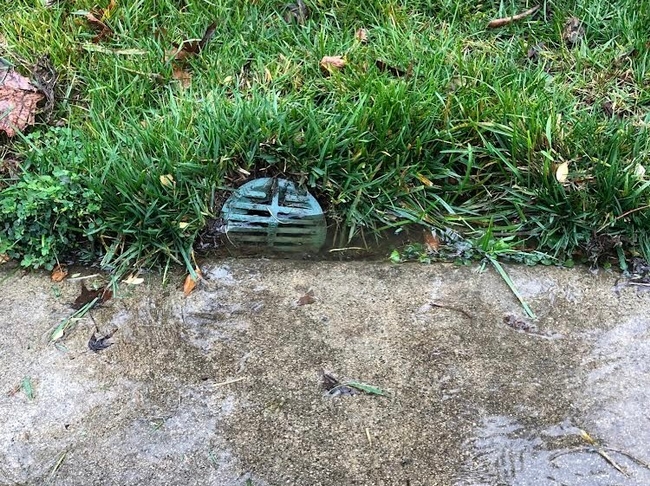
So, it's also a good time to think about ways to prevent the movement of herbicides, pesticides, fertilizers and other contaminants off the property and into waterways, where they can cause environmental harm.
“Pesticides applied to lawns and gardens can be washed into gutters and storm drains. Eventually they will end up in our creeks, rivers or oceans,” said Karey Windbiel-Rojas, associate director for urban and community integrated pest management (IPM) and area IPM advisor for Yolo, Solano and Sacramento counties. “A lot of people think this water goes to a water treatment plant and gets cleaned up, but that's not the case.”
Windbiel-Rojas suggests using IPM practices to deal with crabgrass and other unwanted pests around the home and landscape.
IPM involves monitoring the lawn, landscape plants and gardens and carefully identifying what is causing problems. Decide whether you can tolerate a small amount of weeds. Determine whether the issue can be prevented with cultural or mechanical solutions, such as adjusting irrigation and hoeing for weeds. If this doesn't solve the matter, select chemical materials that are the least-toxic option available.
Controlling crabgrass with IPM
Crabgrass was introduced from Eurasia and is now widespread in the United States. Its thick leaves and clumping habit look unattractive in a uniform lawn. To prevent crabgrass, keep turf heathy and dense to out-compete weeds by selecting a turf species that is suited to the climate; mowing the lawn at the proper height; and overseeding, fertilizing and irrigating properly. A few clumps of crabgrass can be weeded out with a trowel or other tool.
“If you tried all the non-chemical tools, and you're not getting the level of control you are looking for, considering a pesticide may be warranted,” Windbiel-Rojas said.
Preventing environmental contamination

- Prevent water runoff. Take note of the soil slope, texture, saturation and amount of vegetation. Use these factors to decide where to treat weeds and other pests with chemicals. Irrigation overspray is a common cause of runoff that washes materials off paved surfaces. In dry climates, summer runoff is primarily from overirrigation or overspray.
- Don't over water. Rain and excessive irrigation can cause a pesticide to leach into the ground, eventually contaminating the water table.
- Be aware of pesticide characteristics. Some pesticides are more water soluble; others attach or absorb to soil particles that can move off site.
- Keep applications on target. Pesticides accidentally sprayed onto paved surfaces, cracks, crevices, sidewalks, parking areas and hard-packed dirt will quickly run off. Use hardscapes that limit runoff, such as decomposed granite or flagstones between vegetated areas. Create a buffer zone around the edges of the treatment area and around yard drains where you avoid pesticide application to prevent the chemical's movement off site.
- Watch the weather. Rain can carry pesticides away from the application site. Don't apply pesticides if there is any rain forecast. Wind can blow pesticide droplets, dust and grains away from the intended pesticide target. Pesticide application should be done when there is very little or no wind. High temperature and low humidity increase pesticide volatility. A lot of labels will say not to use the product above a certain temperature.
“Many pesticides are available for residential use,” Windbiel-Rojas said. “When buying them, be sure to read the entire label. Do a little research on the active ingredient in the pesticide to learn whether it effectively treats the pest you are targeting, and has the lowest environmental impact.”
Learn more:
Pests in Gardens and Landscapes: Crabgrass, UC IPM
Pesticides and Water Quality (August 18, 2022)
Presenter: Karey Windbiel-Rojas, Associate Director for Urban & Community IPM/Area Urban IPM Advisor
Watch the recording on YouTube